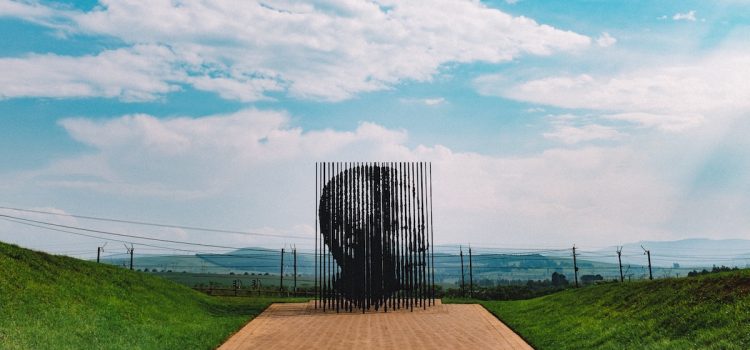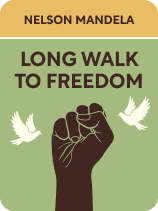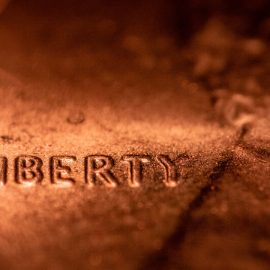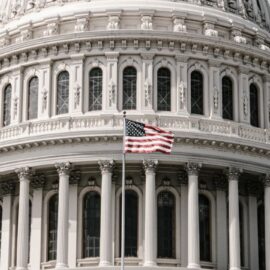

This article is an excerpt from the Shortform book guide to "Long Walk to Freedom" by Nelson Mandela. Shortform has the world's best summaries and analyses of books you should be reading.
Like this article? Sign up for a free trial here.
How was Victor Verster Prison better than the first two prisons where Mandela was held? When and why was he released?
Nelson Mandela spent a total of 27 years in three prisons, enduring harsh conditions but never giving up the fight for racial equality and freedom. In his autobiography, Long Walk to Freedom, Mandela writes about the last of those prisons: Victor Verster.
Continue reading to learn about Mandela’s time at Victor Verster Prison and his eventual release.
Victor Verster Prison: 1988-1990
Mandela recalls that, in 1988, he contracted tuberculosis—a potentially deadly lung infection—due to the damp, dirty conditions in his new room. He was taken to a hospital for treatment. Once he’d recovered, instead of returning to Pollsmoor Prison where he’d been since 1982, he was moved to a nearby facility called Victor Verster Prison.
(Shortform note: Tuberculosis is a very common disease among incarcerated people all over the world. Though Mandela blamed the dank cell for his disease, other possible explanations for its prevalence include malnutrition and overcrowding—conditions that either weaken the immune system or make exposure to tuberculosis more likely.)
Mandela says that Victor Verster Prison had an excellent reputation and was much more comfortable than even Pollsmoor. Instead of a cell, he had a cottage and the surrounding land all to himself; instead of having to follow a strict schedule, he could do as he pleased. In fact, Mandela says that the cottage felt deceptively “free”—he could do anything he wanted, except leave.
(Shortform note: Victor Verster Prison was commonly the last stop for political prisoners before the authorities released them. This, along with the relative privacy and freedom that Mandela’s cottage provided, suggests that the government was planning to release him years before F.W. de Klerk actually gave the order to do so. However, it’s also possible that Mandela was moved to Victor Verster due to his ongoing health issues, as this new prison was closer to doctors and healthcare facilities that could treat him.)
Mandela continued his efforts to arrange a meeting between ANC and NP leaders. In July of 1989, his efforts paid off and he had a brief meeting with State President Botha. Mandela says that, while their discussion didn’t yield any major breakthroughs in ending the conflict, the meeting itself was significant; it was the first time that party leaders had come together for peaceful talks. He hoped that it would be the first step toward peace throughout South Africa.
(Shortform note: State President Botha didn’t just uphold the status quo of apartheid—he was one of its staunchest supporters, and he fought fiercely to protect apartheid at the height of the South African resistance. Numerous quotes from Botha show he firmly believed that apartheid was natural and just; that Black people should be subservient to white people, and that Blacks were happy in their inferior positions unless they were brainwashed to feel otherwise.)
As it turned out, that meeting would be the only time that Mandela spoke to Botha as state president—Botha had suffered a stroke in February of 1989, and he stepped down from the presidency in August of that same year. (Shortform note: Mandela had a great deal of respect for Botha. He praised the former state president for taking the first steps toward equality and peace in South Africa, rather than focusing on the years that Botha spent viciously defending apartheid. When Botha died in 2006, Mandela delivered a moving and heartfelt speech in his former jailer’s honor.)
Mandela’s Release
Mandela explains that Frederik Willem de Klerk, commonly known as F. W. de Klerk, became state president after Botha resigned. De Klerk’s presidency proved to be a major turning point both for Mandela and for South Africa as a whole. At his order, Nelson Mandela was finally released from Victor Verster Prison on February 11, 1990.
(Shortform note: Victor Verster Prison—renamed Groot Drakenstein Correctional Center in 2000—now has a bronze statue of Nelson Mandela standing outside its gates. Though the prison is in a fairly remote location, meaning people would have to go out of their way to see the statue, the spot was chosen to commemorate Mandela’s first moments of freedom.)

———End of Preview———
Like what you just read? Read the rest of the world's best book summary and analysis of Nelson Mandela's "Long Walk to Freedom" at Shortform.
Here's what you'll find in our full Long Walk to Freedom summary:
- Nelson Mandela’s extraordinary life story, as told by the man himself
- Why it took Mandela over 40 years to finish his law degree
- Nelson Mandela’s legacy and what South Africa is like in its post-apartheid years






